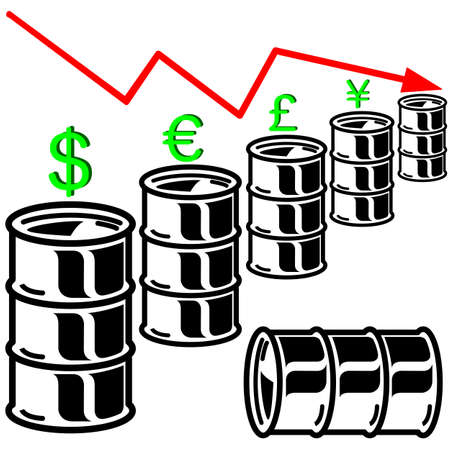1. Introduction to Stock Market Terminology
Investing in the stock market can be both exciting and rewarding, but it also comes with its own set of terms and jargon that might seem overwhelming at first. Understanding stock market terminology is crucial for investors because it helps them make informed decisions, communicate effectively, and analyze market trends more accurately.
When you know the key terms used in the stock market, you can better interpret financial news, understand company reports, and evaluate investment opportunities. Whether youre a beginner or an experienced investor, having a solid grasp of these terms will give you greater confidence when navigating the world of stocks.
Here’s why understanding stock market terminology is essential:
- Better Decision-Making: Knowing the meaning behind common stock market terms allows you to assess investments more effectively.
- Improved Communication: Whether youre discussing stocks with a financial advisor or reading market analysis, understanding the language makes everything clearer.
- Enhanced Market Awareness: Recognizing key terms helps you stay updated on economic trends and investment strategies.
In this guide, we’ll break down essential stock market terminology so that you can invest with confidence. Let’s dive in!
2. Basic Stock Market Terms
Understanding basic stock market terms is essential for anyone looking to invest. Here are some key terms every beginner should know:
Stocks vs. Shares
The terms “stocks” and “shares” are often used interchangeably, but they have slight differences.
| Term | Definition |
|---|---|
| Stock | A general term that represents ownership in one or more companies. |
| Share | A unit of ownership in a specific company. |
Dividends
A dividend is a portion of a companys profits paid to its shareholders. Not all stocks pay dividends, but many well-established companies do. Dividends can be paid in cash or additional shares.
Market Capitalization (Market Cap)
Market capitalization refers to the total value of a companys outstanding shares. It is calculated using the following formula:
Market Cap Formula:
Market Cap = Share Price × Total Outstanding Shares
Types of Market Capitalization:
- Large-Cap: Companies with a market cap over $10 billion.
- Mid-Cap: Companies with a market cap between $2 billion and $10 billion.
- Small-Cap: Companies with a market cap under $2 billion.
Knowing these basic terms will help you navigate the stock market with confidence and make informed investment decisions.

3. Technical and Fundamental Analysis Terms
Investors use both technical and fundamental analysis to evaluate stocks. Understanding key terms in these areas can help you make informed decisions. Below are some essential concepts every investor should know.
Fundamental Analysis Terms
Fundamental analysis focuses on a company’s financial health and overall performance. Here are some important terms:
Price-to-Earnings Ratio (P/E Ratio)
The P/E ratio compares a companys stock price to its earnings per share (EPS). A high P/E ratio may indicate a growth stock, while a low P/E ratio might suggest an undervalued company.
Earnings Per Share (EPS)
EPS measures a companys profitability by dividing net income by the number of outstanding shares. Higher EPS generally indicates better profitability.
Dividend Yield
The dividend yield shows how much a company pays in dividends relative to its stock price. Investors looking for steady income often prioritize stocks with attractive dividend yields.
| Term | Description |
|---|---|
| P/E Ratio | A measure of stock valuation comparing price to earnings per share. |
| EPS | A companys profit divided by outstanding shares, indicating profitability. |
| Dividend Yield | The percentage of return from dividends relative to stock price. |
Technical Analysis Terms
Technical analysis focuses on historical price movements and trading patterns to predict future trends. Here are key technical terms:
Moving Averages
A moving average smooths out price data over a set period, helping identify trends. Common types include the 50-day and 200-day moving averages.
Support and Resistance Levels
Support levels: Price points where a stock tends to stop falling and bounce back.
Resistance levels: Price points where a stock struggles to rise above and often reverses downward.
Relative Strength Index (RSI)
The RSI measures momentum on a scale from 0 to 100. Readings above 70 suggest overbought conditions, while readings below 30 indicate oversold conditions.
| Term | Description |
|---|---|
| Moving Averages | A tool used to identify trends by averaging prices over time. |
| Support & Resistance | S&P levels where stock prices tend to stop or reverse direction. |
| RSI | A momentum indicator signaling overbought or oversold conditions. |
4. Trading and Investment Strategies
When investing in the stock market, understanding different trading and investment strategies can help you make informed decisions. Investors and traders use various approaches based on their risk tolerance, time horizon, and financial goals. Below are some common trading styles and key terms associated with each.
Day Trading
Day trading involves buying and selling stocks within the same trading day to capitalize on short-term price movements. This strategy requires quick decision-making and a deep understanding of market trends.
Common Day Trading Terms
| Term | Definition |
|---|---|
| Scalping | A strategy that involves making numerous small trades to profit from minor price changes. |
| Momentum Trading | Trading based on the strength of a stock’s recent price movement. |
| Level 2 Quotes | A tool that provides real-time bid and ask prices to help traders analyze market depth. |
Swing Trading
Swing traders hold stocks for several days or weeks to capture short- to medium-term price movements. They rely on technical analysis to identify trends and potential entry points.
Common Swing Trading Terms
| Term | Definition |
|---|---|
| Candlestick Patterns | Chart patterns that indicate potential reversals or continuations in price trends. |
| Bullish & Bearish Signals | Bullish signals indicate potential upward trends, while bearish signals suggest downward movements. |
| Support & Resistance Levels | Key price levels where a stock tends to stop falling (support) or rising (resistance). |
Value Investing
This long-term strategy focuses on finding undervalued stocks that have strong fundamentals. Investors look for companies with solid financials, low valuation metrics, and growth potential.
Common Value Investing Terms
| Term | Definition |
|---|---|
| P/E Ratio (Price-to-Earnings) | A valuation metric comparing a companys stock price to its earnings per share. |
| DCA (Dollar-Cost Averaging) | An investment strategy where an investor buys shares at regular intervals, reducing the impact of market volatility. |
| Earnings Reports | A company’s quarterly financial statement that investors use to assess profitability and future prospects. |
5. Risk Management and Market Psychology
Investing in the stock market comes with risks, but understanding key risk management strategies and market psychology can help investors make informed decisions. Below are essential terms that every investor should know to navigate market fluctuations effectively.
Volatility
Volatility refers to how much a stocks price moves up and down over time. A highly volatile stock experiences significant price swings, while a low-volatility stock has more stable price movements. Investors often use volatility to assess risk levels before making investment decisions.
Stop-Loss Orders
A stop-loss order is a tool used by investors to limit potential losses. It automatically sells a stock when it reaches a predetermined price, preventing further losses if the stock continues to decline. This strategy helps investors manage risk by ensuring they dont hold onto losing positions for too long.
Diversification
Diversification is the practice of spreading investments across different assets, industries, or geographic regions to reduce risk. By not putting all their money into one stock or sector, investors can minimize the impact of a poor-performing asset on their overall portfolio.
| Investment Type | Description |
|---|---|
| Stocks | Ownership in a company, offering growth potential but higher volatility. |
| Bonds | Fixed-income investments that provide stability and lower risk. |
| ETFs & Mutual Funds | Pooled investments that offer diversification across multiple assets. |
| Real Estate | Tangible assets that can provide steady income and hedge against inflation. |
Market Sentiment
Market sentiment refers to the overall attitude of investors toward a particular stock or the market as a whole. It can be influenced by news, economic data, earnings reports, and geopolitical events. Understanding market sentiment helps investors anticipate potential trends and make strategic investment decisions.

